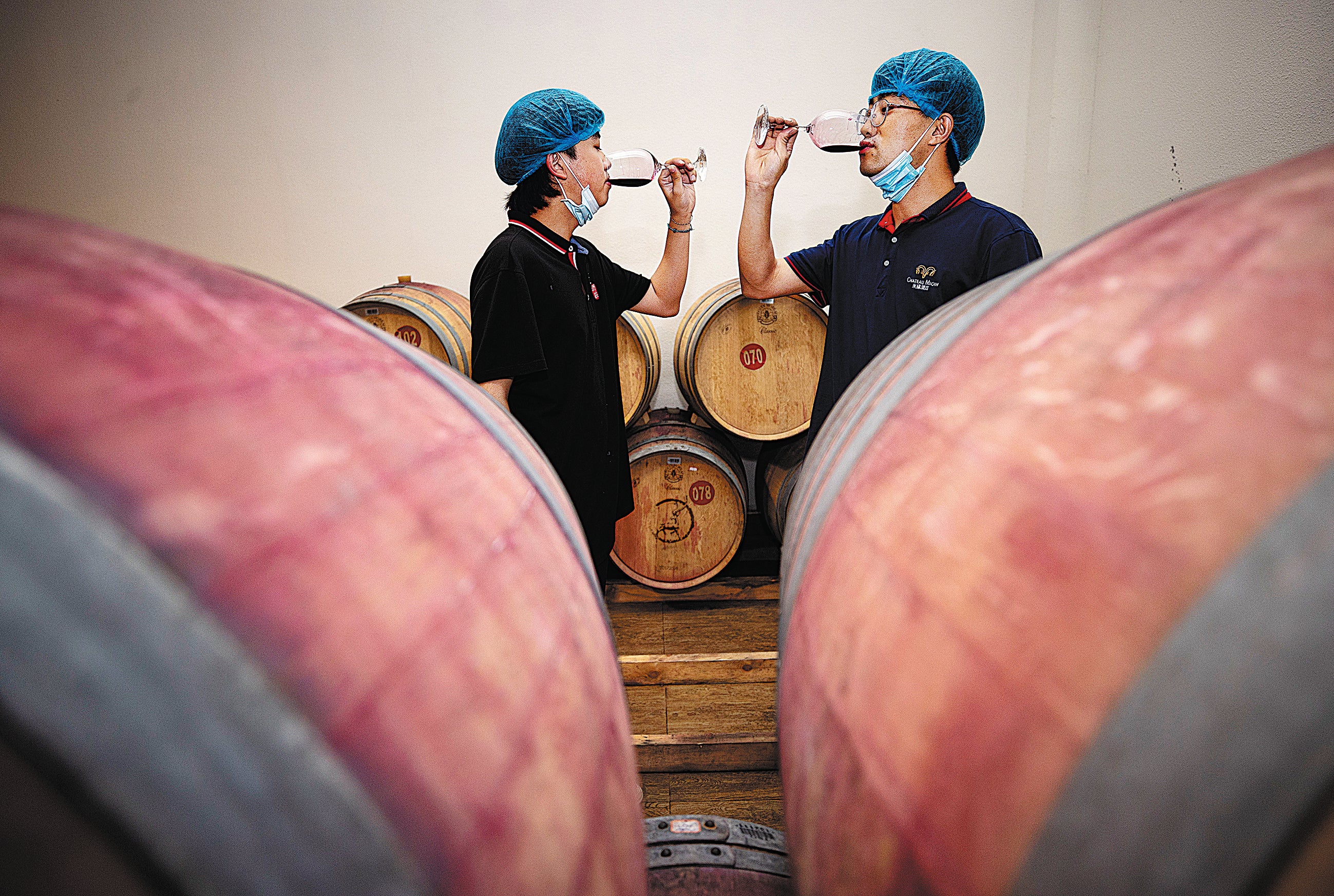Raising glasses
THE ARTICLES ON THESE PAGES ARE PRODUCED BY CHINA DAILY, WHICH TAKES SOLE RESPONSIBILITY FOR THE CONTENTS

On a hilly expanse of farmland near the coast of East China’s Shandong province, Wan Qiuhua has earned enough from her crops to buy her only son an apartment and car.
Most farmers in the area believe the land at Zhuqiao township, Yantai, is not fertile enough to support common crops. But Wan has been growing one crop perfectly suited to the local conditions – grapes.
“This year we made 100,000 yuan (£11,700) from planting wine grapes,” said Wan, 53, adding that the income is much higher than that from the corn, wheat and peanuts they farmed a decade ago. “We could hardly make ends meet from the hilly terrain before, but our life is getting better now,” she said.
Wan and her husband have been working a 25-acre plot since 2013. They are one of 30 farming families who have entered into a land management arrangement with Changyu Wine Group, China’s leading wine producer, to grow grapes.
“The hills may be unsuitable for most crops, but they’re good for wine grapes,” said Yang Yachao, an experienced Changyu winemaker who graduated from the College of Oenology at Northwest Agriculture and Forestry University.
In 2012, Yang helped lead the development of Zhuqiao’s major grape cultivation base, which provides jobs for 600 rural residents who earn 10,000 (£1,177) yuan a year each from the work.
With his colleagues, Yang also conducts regular training sessions for the farmers. “We teach them standard cultivation techniques and train them in the details of vine growth throughout its various stages to guarantee the highest grape quality,” he said.
Yantai is the birthplace and hub of modern Chinese winemaking. The area has annual sunshine of more than 2,600 hours, yearly rainfall of 20.7in, a mean annual temperature of 13C and soil with high gravel content. The ocean breezes that blow over the hills also aid the production of coveted coastal wines.
The city has grown to have a winemaking area of 46,900 acres, which involves at least 203 major companies. There are 12 leading winemakers, and last year they produced a combined 713,000 hectolitres of wine – nearly one-fifth of the nation’s wine production.
Yantai wines are set to fill even more glasses at home and abroad, following their inclusion on the list of China’s 100 geographical indications under protection in the European Union. An indication is a label for products that have a specific geographical origin with qualities or a reputation that are due to that origin, according to the World Intellectual Property Organization.
Late last year, China and the EU introduced measures to protect 100 of the EU’s geographical indications and 100 Chinese geographical indications against imitations.
Similar wine products from the east of the Helan Mountains in Northwest China’s Ningxia Hui autonomous region and Shacheng, a town in Huailai County in North China’s Hebei province have also attained the geographical indication.
Ningxia has 211 wineries with a combined area of more than 90,400 acres for grape cultivation. The region produces 130 million bottles of wine annually. In 2020, Ningxia wine exports were up by more than 46 per cent year-on-year despite disruptions caused by the pandemic, according to the latest industry figures.
Previously published on Chinadaily.com.cn
Subscribe to Independent Premium to bookmark this article
Want to bookmark your favourite articles and stories to read or reference later? Start your Independent Premium subscription today.